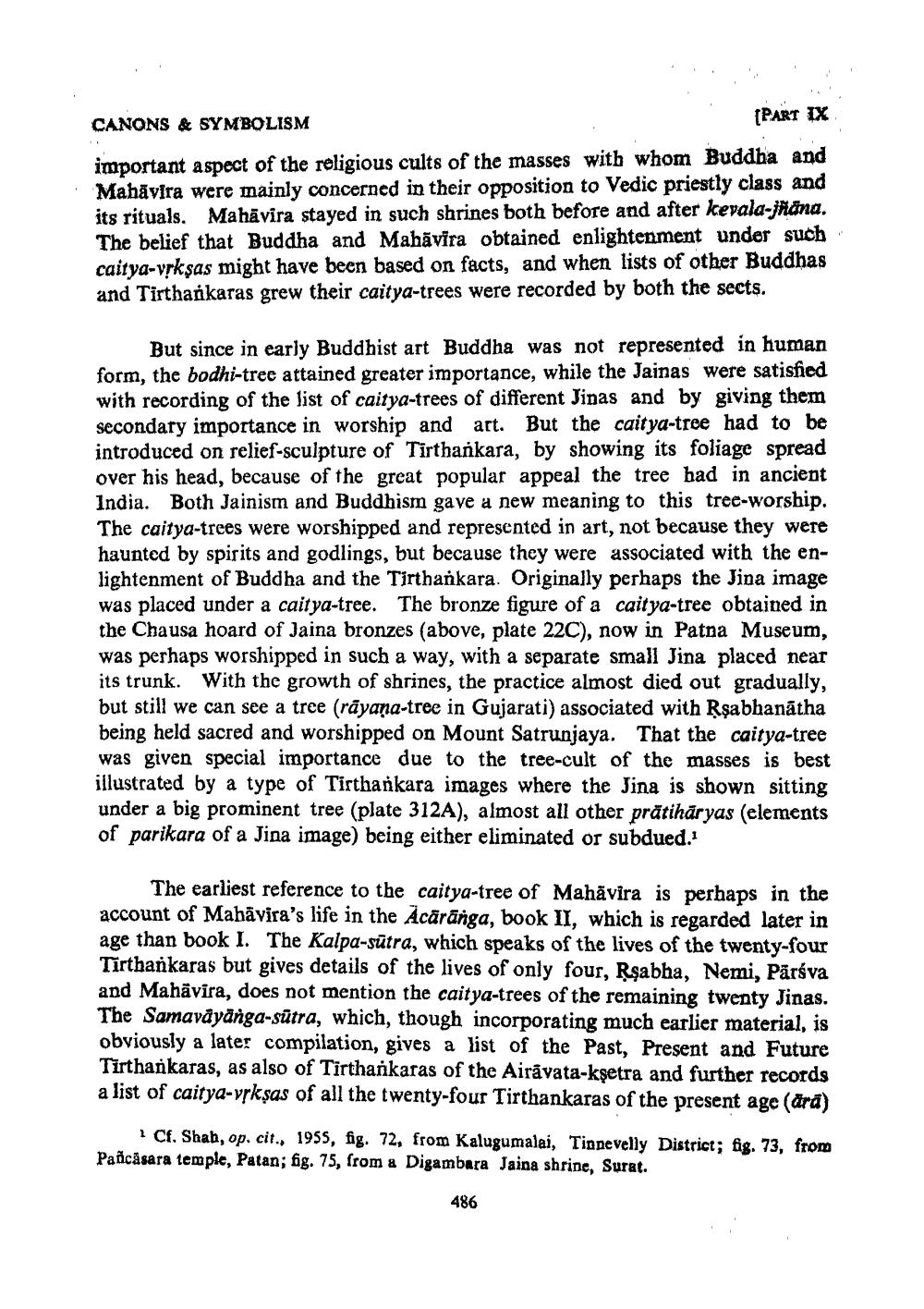________________
CANONS & SYMBOLISM
[PART IX
important aspect of the religious cults of the masses with whom Buddha and Mahavira were mainly concerned in their opposition to Vedic priestly class and its rituals. Mahavira stayed in such shrines both before and after kevala-jñana. The belief that Buddha and Mahavira obtained enlightenment under such caitya-vrksas might have been based on facts, and when lists of other Buddhas and Tirthankaras grew their caitya-trees were recorded by both the sects.
But since in early Buddhist art Buddha was not represented in human form, the bodhi-tree attained greater importance, while the Jainas were satisfied with recording of the list of caitya-trees of different Jinas and by giving them secondary importance in worship and art. But the caitya-tree had to be introduced on relief-sculpture of Tirthankara, by showing its foliage spread over his head, because of the great popular appeal the tree had in ancient India. Both Jainism and Buddhism gave a new meaning to this tree-worship. The caitya-trees were worshipped and represented in art, not because they were haunted by spirits and godlings, but because they were associated with the enlightenment of Buddha and the Tirthankara. Originally perhaps the Jina image was placed under a caitya-tree. The bronze figure of a caitya-tree obtained in the Chausa hoard of Jaina bronzes (above, plate 22C), now in Patna Museum, was perhaps worshipped in such a way, with a separate small Jina placed near its trunk. With the growth of shrines, the practice almost died out gradually, but still we can see a tree (rāyaṇa-tree in Gujarati) associated with Rṣabhanatha being held sacred and worshipped on Mount Satrunjaya. That the caitya-tree was given special importance due to the tree-cult of the masses is best illustrated by a type of Tirthankara images where the Jina is shown sitting under a big prominent tree (plate 312A), almost all other prätiharyas (elements of parikara of a Jina image) being either eliminated or subdued.'
The earliest reference to the caitya-tree of Mahavira is perhaps in the account of Mahavira's life in the Acaränga, book II, which is regarded later in age than book I. The Kalpa-sutra, which speaks of the lives of the twenty-four Tirthankaras but gives details of the lives of only four, Ṛsabha, Nemi, Pārsva and Mahavira, does not mention the caitya-trees of the remaining twenty Jinas. The Samavayanga-sutra, which, though incorporating much earlier material, is obviously a later compilation, gives a list of the Past, Present and Future Tirthankaras, as also of Tirthankaras of the Airavata-kṣetra and further records a list of caitya-vrksas of all the twenty-four Tirthankaras of the present age (ard)
1 Cf. Shab, op. cit., 1955, fig. 72, from Kalugumalai, Tinnevelly District; fig. 73, from Palcasara temple, Patan; fig. 75, from a Digambara Jaina shrine, Surat.
486




